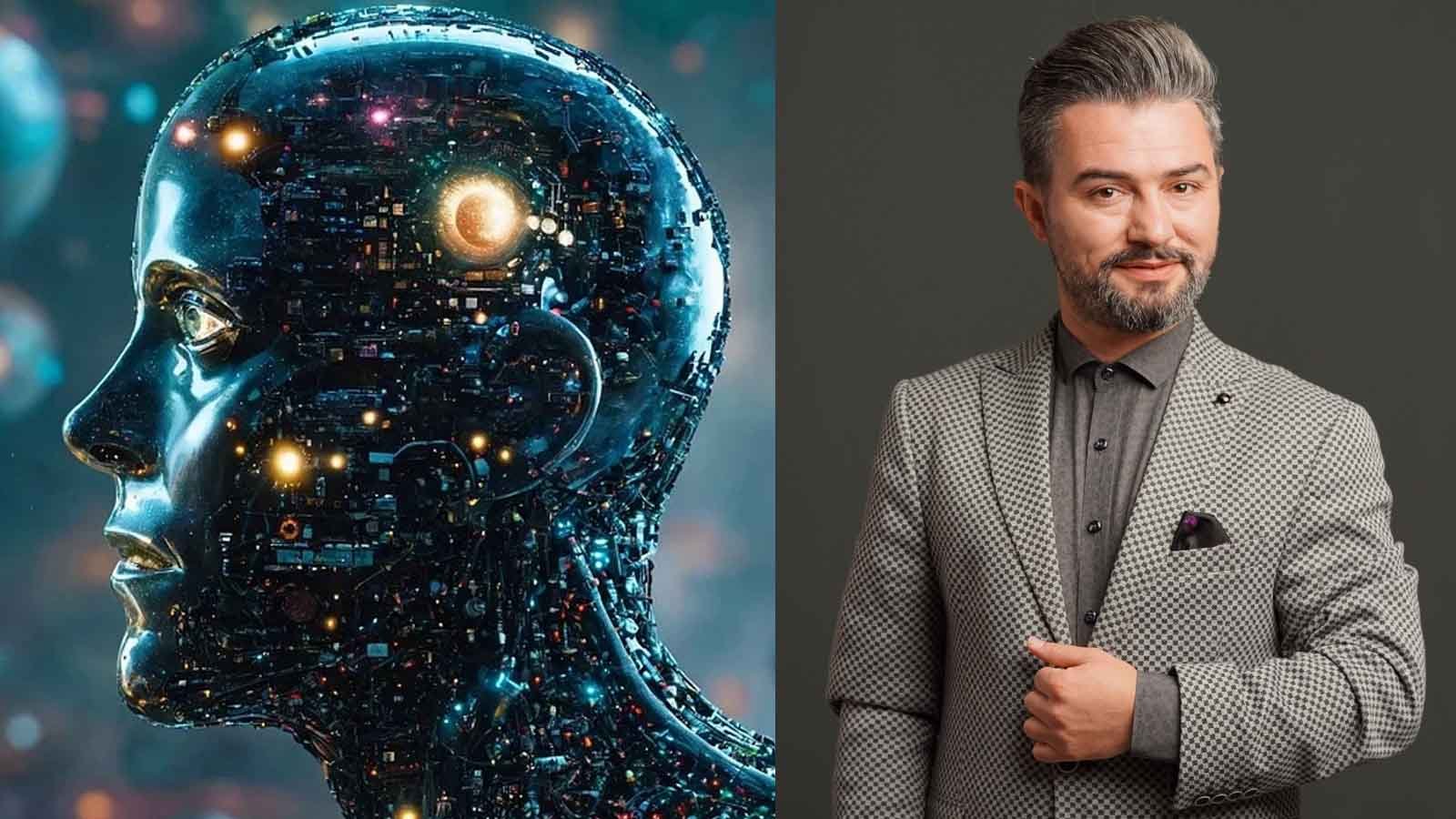“Science fiction literature has historically served as a platform for predicting the future and exploring technological advancements by harnessing human imagination. However, in today’s world, the once-fictional creations that existed solely within the pages of novels have become a reality. Beyond the realm of science fiction literature, numerous technologies now exist in the real world that shape the future. In this article, we will focus on some significant technological developments that were inspired by and even surpassed the realm of science fiction literature.

- Artificial Intelligence and Smart Robots
For years, science fiction literature has been a realm that has shaped and pushed the boundaries of human imagination. This literary genre has frequently delved into concepts such as artificial intelligence and smart robots, shaping people’s thoughts about the future. However, today, these imaginative creations are beginning to materialize into reality. Thanks to significant advancements in technological areas like artificial intelligence, deep learning, and machine learning, AI is stepping out of the pages of science fiction novels and into the center of our lives.
In the present day, with the rapid advancement of AI technology, we are witnessing sophisticated applications in various fields. For instance, self-driving cars are now navigating our roads. These cars utilize complex AI systems that perceive their surroundings to move safely. Moreover, AI-based systems in the medical field offer substantial potential for early disease diagnosis and treatment. AI technologies are contributing significantly to fields such as medical imaging, diagnostics, and drug development.
The application of AI in customer service is also growing. Through AI support in online platforms and call centers, questions can be answered promptly, enhancing user experience. This reduces dependence on human resources while offering substantial advantages in terms of speed and efficiency.
Smart robots have also started playing a crucial role in various sectors such as manufacturing, logistics, and healthcare. In factories, robots handle repetitive and hazardous tasks, allowing humans to focus on more creative and complex responsibilities. In the logistics sector, automation and robotic systems expedite warehouse management and cargo transportation in a faster and error-free manner. In healthcare, surgical and assistant robots minimize human errors in tasks such as surgeries and patient care.
Beyond the realm of science fiction literature, AI and smart robots have become an integral part of our lives. In the future, these technologies are expected to become even more sophisticated and widely used. However, the ethical and societal implications of these advancements should also be considered. Efforts should be directed towards using these technologies not only to make life easier but also in an ethical and sustainable manner.

- Space Exploration and Colonization
Science fiction literature has been a realm that reflects humanity’s desire to explore different worlds in the depths of space. This genre frequently touches upon concepts of establishing life on different planets and exploring space. Today, these imaginative ideas are gradually turning into concrete goals.
Particularly, significant steps are being taken towards the exploration and even colonization of planets like Mars. Space research is advancing rapidly, led by private companies and national space agencies. The idea of sending human missions to Mars has garnered increasing interest not only in the pages of science fiction novels but also in the real world.
For instance, SpaceX, founded by Elon Musk, is actively working on sending humans to Mars. The long-term goal of this project is to establish a sustainable colony on Mars. Additionally, NASA continues to pursue plans for sending humans to Mars and supports technological advancements toward this goal. Data obtained from space research indicates that Mars might have had water in the past and potentially even supported life.
Space exploration and interplanetary colonization are reflections of humanity’s desire to push boundaries and take steps towards new horizons. These endeavors continue not only within the pages of science fiction novels but also in the real world. Especially the interest and investments from the private sector have become a significant driving force in turning humanity’s search for living spaces beyond Earth into reality.

- Biotechnology and Genetic Editing
Science fiction literature has discussed concepts like biotechnology and genetic editing, envisioning altering human genetic structures and treating genetic diseases. Today, these concepts have transformed into technologies with significant real-world potential.
Particularly, revolutionary gene editing technologies like CRISPR-Cas9 have reshaped the field of science. Through these technologies, genes can be precisely edited and altered. Genetic diseases’ problems could potentially be solved through these technologies by correcting mutations causing genetic diseases and replacing them with healthy genes.
Furthermore, advancements in biotechnology hold promising prospects in areas such as artificial organ production, tissue engineering, and slowing down aging. Through 3D bioprinting technology, human organs and tissues can be produced, potentially saving the lives of patients awaiting transplants. Tissue engineering aids in the repair of injured or damaged tissues.
In terms of slowing down aging, biotechnology also plays a crucial role. Gene editing technologies and anti-aging research hold the potential to understand and slow down the aging process. Scientists are making significant strides in gene editing and optimizing biochemical processes to prevent or treat age-related diseases.
Beyond the realm of science fiction literature, biotechnology and genetic editing are technologies with substantial potential for reshaping humanity’s genetic structures. These fields have made significant impacts and raised hopes in areas such as treating genetic diseases, organ transplants, tissue engineering, and the deceleration of aging.

- Virtual Reality and Augmented Reality
Science fiction literature has frequently portrayed futuristic technologies like virtual reality (VR) and augmented reality (AR) to immerse readers into different worlds. However, these technologies are now more than just products of imagination; they have become integral parts of our lives in the real world.
Virtual reality transports users to entirely different digital environments. Through this technology, users feel like they are inside a virtual world. VR has various applications in the entertainment industry, including games, simulations, and virtual tours. Moreover, VR technology is employed in education and healthcare. For example, VR simulations aid in surgical training, allowing students to practice and improve their skills.
Augmented reality enriches the real world with digital content. This technology overlays digital images, sounds, or information onto the physical world, offering new experiences. AR applications integrated with mobile devices enhance daily life. Maps, promotional videos, advertisements, and more are made interactive and engaging through AR technology.
Themes of virtual reality and augmented reality, often depicted in science fiction, now have a broad range of real-world applications. These technologies extend beyond entertainment to education, healthcare, business, and more. While virtual reality allows users to explore different worlds, augmented reality enhances the real world with digital content, offering novel experiences. As these technologies continue to advance, future applications are expected to be even more interesting and innovative.

- Renewable Energy and Sustainability
The theme of energy sources frequently explored in science fiction aligns with real-world developments in the energy sector. The limitations and environmental impacts of fossil fuels have prompted the search for alternative energy sources. As a result, renewable energy sources have played a significant role in transforming the energy sector.
Solar energy, a long-standing concept in science fiction, has become a real alternative energy source today. Solar panels convert sunlight into electricity, providing a clean energy source. This technology gains importance in the energy sector due to its environmental friendliness and unlimited availability.
Wind energy, another concept depicted in science fiction works, has also become a reality. Wind turbines convert wind energy into electricity, facilitating energy production. Offshore wind farms, in particular, have the potential to generate significant amounts of clean energy.
Hydropower utilizes the potential energy of water to produce electricity. Dams and mechanisms that control water flow enable energy production. This method supports both sustainability and large-scale energy production.
Themes of energy sources depicted in science fiction are now intertwined with real developments in renewable energy. Solar energy, wind energy, and hydropower are sustainable sources that address energy demand while minimizing environmental impacts. Further advancements and widespread adoption of these technologies are shaping the future of the energy sector.
***
The influence of science fiction literature extends beyond narratives to inspire and shape futuristic ideas. Through the imaginative worlds crafted by authors, this genre has influenced human thought processes and perspectives on technology. Today, numerous technologies that were once solely fictional creations have become integral to our lives, shaping the future.
Artificial intelligence, a topic frequently explored in science fiction, has become a significant technology that transcends its fictional origins. Rapid advancements in AI technology have brought it to the forefront of various fields, impacting many aspects of our lives.
Space exploration, often a central theme in science fiction, has led to serious efforts to explore and even colonize planets like Mars. The endeavors of private companies and national space agencies have yielded exciting developments that transform humanity’s aspiration to explore space and find new habitats into reality.
Advancements in biotechnology and genetic editing have substantial potential in healthcare and beyond. CRISPR-Cas9 and related technologies offer solutions for genetic diseases and hold promise in organ production, tissue engineering, and the fight against aging.
Virtual reality and augmented reality, themes drawn from science fiction, are now widely applied in fields from entertainment to education and healthcare. These technologies provide immersive experiences and enrich the real world with digital content.
The theme of energy sources in science fiction aligns with the increasing importance of renewable energy today. Solar, wind, and hydropower are sustainable alternatives that address energy needs while minimizing environmental impact.
The intersection of science fiction literature and technology presents exciting questions about the future’s shape. These advancements and imaginative concepts illuminate pathways for humanity’s future.




































